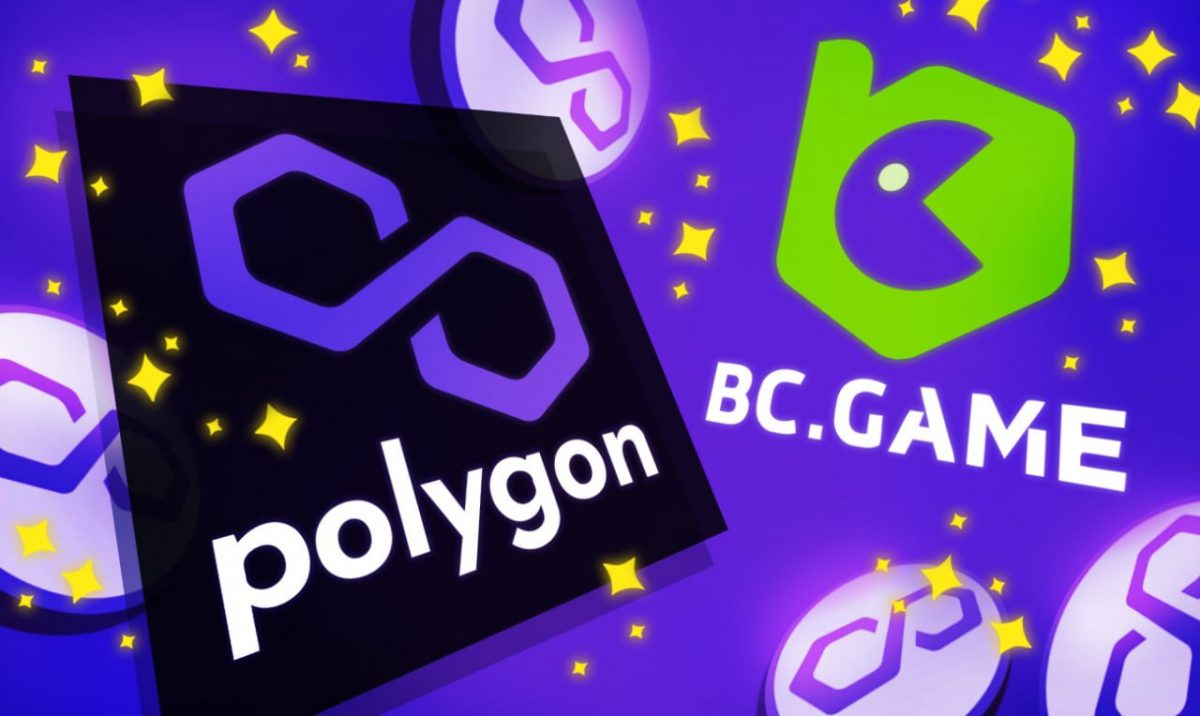The Ethereum blockchain was a watershed addition to the blockchain industry. However, it soon began to struggle under the weight of usage as its popularity soared. Even though the development team is working to remedy the scalability issues, solutions like Polygon (MATIC) have a vital role in buffering the capabilities of the Ethereum blockchain. Crypto gambling enthusiasts on BC.GAME know plenty about Ethereum. ETH is a versatile asset with hundreds of applications that rely on it for liquidity. Besides, several Ethereum standard tokens make exchange and commerce easier. Online gambling using crypto tokens provides payment efficiency and the opportunity to benefit in real-time if the crypto that forms part of your winning appreciates. In other words, this industry has many exciting opportunities, among them being Polygon.
About Polygon (MATIC)
For years, Polygon went by the name Matic Network. The rebranded platform aims to be a framework for building interconnected blockchain networks. Circling back to Ethereum, the opening for Polygon is in the scalability shortcomings of Ethereum. The Matic Network made its name as a Layer-2 scaling solution. These solutions provide another layer to take some transaction processing load off Ethereum. Accordingly, they offer better throughput and transaction speeds. Polygon takes this vision to another level by seeking to improve community governance and a novel sidechain solution.
What Is Polygon?
This revamped platform utilises a technology called Plasma to process off-chain solutions. Subsequently, the transactions reach finality on the Ethereum main chain. Unlike Matic, which was a scaling solution, Polygon is a more comprehensive platform allowing developers to launch interoperable blockchains. Developers have the tools to launch their customised blockchain networks. They can use a range of modules to create blockchains with more specific functionality. Therefore, Polygon is not limiting its scope to be a mere scalability solution. This platform intends to become a hub for developers, as is the case for larger smart contract blockchains.
Polygon’s Architecture
The key to Polygon functionality is its innovative four-layer system. In brief, these are the Ethereum layer, the security layer, the Polygon networks layer, and the execution layer. All these layers have a vital role in the transaction execution chain. For instance, the first layer is naturally the Ethereum layer. These are a set of smart contracts on Ethereum, of which there are millions. This first layer sets the chain in motion, including essential communication with the various Polygon chains. The security layer runs simultaneously with the Ethereum layer. It provides the “validators as a service” role, which helps add a layer of security to the Polygon chains. The security layer relies on a proof-of-stake sidechain to perform transaction validation.
Polygon’s workings
Notably, the Polygon networks layer is the ecosystem of blockchains that will define this platform in the future. Each blockchain comes with its community, which is responsible for local consensus and other internal matters. The Polygon Execution layer is what executes smart contracts. In other words, it is similar to the Ethereum Virtual Machine, Ethereum’s implementation for executing smart contracts. Polygon works as a sidechain to the main Ethereum blockchain in its scalability function. However, it has not limited its focus to this function like other Layer-2 solutions. The blockchains that launch on Polygon can communicate seamlessly. These blockchains have broader use cases, such as interoperable decentralised applications and faster inter-platform value exchange.
An Internet of Blockchains: Polygon
Blockchain technology is one of the defining innovations of the 21st century. Its wide-ranging application across finance, data systems, tracking, and multiple other sectors is revolutionary. However, inter-chain communication is still not at the level this technology warrants. Polygon aims to change the way most blockchains operate as closed-off siloes. The aim is to create a broader network in an interconnected landscape of blockchains. Such communication can have the effect the internet had on information, probably to a lesser extent. In the long term, such a solution could prove to be a turning point for blockchain systems. A multichain network will be the first step towards opening an interactive and borderless commerce system for decentralised services. Different blockchains can thrive in this ecosystem and overcome individual limitations.
The MATIC Coin
At the heart of most cryptocurrency projects is a token to provide liquidity. Despite the rebranding, the utility token for Polygon is still MATIC. At press time, MATIC traded for about $1.62. This token has multiple roles within the ecosystem. For one, it allows token holders to participate in network governance. Polygon, just like Ethereum, regularly votes on improvement proposals for the network.
Additionally, MATIC holders can help secure the network through staking, for which they also earn rewards. As the Polygon ecosystem grows, this token will gain more utility. This platform has a broader vision that should give this token even more visibility in the future. BC.GAME added MATIC as one of the tokens that online gambling enthusiasts can wager using. It is convenient to transfer and trade, which has given it decent popularity in crypto circles.
The Big Picture
Polygon is looking at the broader smart contract ecosystem and the opportunities therein. The success of the decentralised finance (DeFi) industry in the past two years has unleashed a torrent of capital into Ethereum and associated blockchains. This vast market now needs the efficiency that comes with more usage. Accordingly, Polygon aims to provide a breakthrough solution for thousands of developers in various industries, including online Bitcoin gambling serving BC.GAME and other players. These developers will find great utility in Polygon’s scalable and interoperable blockchain tools.
Additionally, this platform continues to provide much-needed scalability for the Ethereum blockchain. Ethereum developers continue implementing strategies like transitioning to Proof-of-Stake consensus to address the issues. However, these are not coming fast enough to handle all the problems. Therefore, Polygon will continue to play a vital role in providing scalability to Ethereum as it builds its internet of blockchains.













